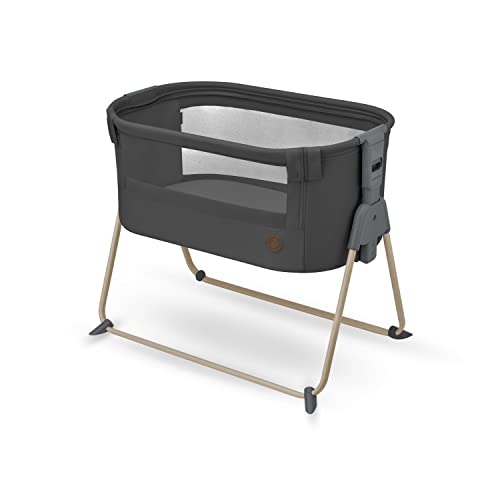

Tots and Cots: A Comprehensive Guide for Parents
When it concerns ensuring a safe and comfortable sleeping environment for children and young children, the choices moms and dads make-- varying from cribs to cots-- can significantly affect their wellness. Today's article dives deep into the intricacies of picking the very best sleeping arrangements for Tots and cots (101.34.211.172), emphasizing security, style, functionality, and how these options evolve as a kid grows.
Comprehending Tots and Cots
Tots generally describe children, especially young children aged in between 1 to 3 years, while cots are the sleeping arrangements specifically developed for infants and young children. The proper sleeping devices for this age includes different types of cots, cribs, and toddler beds.
Kinds of Cots
Numerous styles exist to meet the varied requirements of both parents and kids. Below is a list outlining the most typical types of cots available:
Standard Crib
- A standard crib is developed for infants and normally consists of sides that can be adapted to various heights.
Convertible Crib
- This type of crib can convert into a toddler bed, daybed, or full-sized bed as the child grows, making it a long-term financial investment.
Portable Crib
- Also known as travel cots, these are light-weight and quickly collapsible, perfect for taking a trip or smaller sized living areas.
Co-Sleeper
- A co-sleeper crib attaches to the side of the parents' bed, allowing for simple gain access to while guaranteeing the baby has a separate and safe sleeping space.
Toddler Bed
- A toddler bed is a little bed that looks like a standard bed however is designed specifically for young children, usually featuring safety rails.
Mini Crib
- Mini cribs are smaller sized than standard cribs, making them a great choice for tight spaces, however they are ideal for infants only.
Safety Considerations
Ensuring safety is paramount when picking a cot for a child. Here are critical security guidelines parents should think about:
- Check for CPSC Certification: Ensure that the cot adheres to the Consumer Product Safety Commission (CPSC) requirements.
- Prevent Drop-Sides: Cots with drop-sides have been connected to security risks, and the most current security regulations forbid them.
- Use a Firm Mattress: A company mattress lowers the risk of suffocation and ought to fit snugly within the cot.
- Keep Bedding Simple: Use a fitted sheet and avoid pillows, comforters, and packed animals that can present suffocation hazards.
- Follow Weight and Age Guidelines: Ensure the kid has not exceeded the cot's weight limitation and is still within the suggested age.
Transitioning from a Cot to a Toddler Bed
The shift from a cot to a young child bed can be an emotional milestone for both moms and dads and kids. Here are actions to alleviate the transition:
Timing
Choosing when to shift can be subjective, however it's usually suggested to make the switch between 18 months and 3 years, based upon elements like:
- Physical Ability: If the kid is climbing up out of the cot.
- Potty Training: Consider transitioning if the child is toilet training and needs easier access.
- Habits: Exhibiting indications of maturity, such as following guidelines or revealing a desire for self-reliance.
Tips for Making the Transition Smooth
Include Your Child: Let the child select their brand-new bedding or bed design to instill excitement about the change.
Keep Routine Consistent: Maintain the kid's bedtime regimen to supply comfort during this period of modification.
Describe the Change: Discuss the shift to a toddler bed favorably, making it seem like a great adventure.
Security Measures: Place the bed versus the wall or usage bed rails to avoid falling during sleep.
Picking the Right Bed
When selecting a young child bed, parents need to consider aspects like:
- Height: Low-profile beds are perfect for young children who may fall out throughout sleep.
- Durability: Ensure the bed can stand up to active play in addition to sleep.
- Design and style: Choose a style that complements the child's room and is appealing to the kid.
Picking the best cot for your child can be a difficult procedure, however comprehending the options offered, essential safety factors to consider, and the ideal timing for transitioning to a young child bed can make this journey simpler for moms and dads. Investing effort and time into these choices will make sure that your kid has a safe, comfortable, and nurturing sleep environment.
Frequently asked questions
1. What is the difference between a cot and a crib?
- A cot is normally a smaller sized bed designed for more youthful toddlers, while a crib is a bigger bed that is usually appropriate for babies approximately 3 years old.
2. When should I move my child from a crib to a young child bed?
- The shift time is generally between 18 months and 3 years; this modification is based on the kid's physical capabilities and behavioral indications.
3. How can I guarantee my child is safe while sleeping?
- Constantly abide by safety requirements, utilize a company mattress with a simple bedding plan, and keep an eye on the cot's weight limit.
4. What should I do if my child tries to climb out of the cot?
- If your child is climbing out, it might be time to think about transitioning to a toddler bed to avoid falls.
5. Can I use the very same mattress when transitioning?
- Generally, it is best to change the crib bed mattress with one that specifies to the young child bed. Guarantee it fits snugly and abides by safety standards.
By considering these aspects, moms and dads can model healthy sleep routines and offer their children with a safe and secure environment that promotes peaceful sleep. Buying quality sleeping plans will contribute to the child's general development and happiness.






